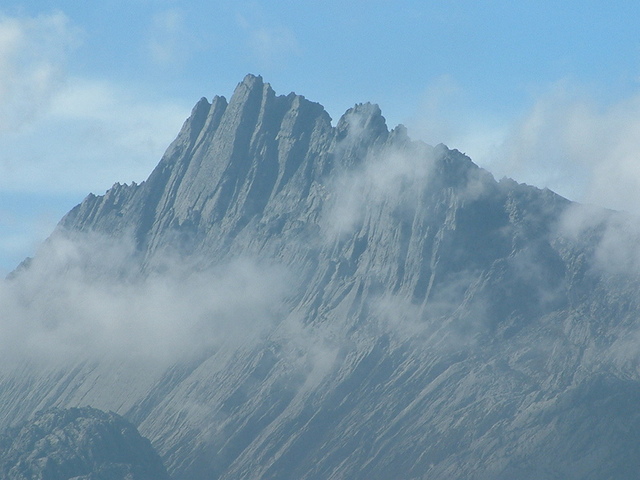The Earth’s continents are home to some of the planet’s most breathtaking and formidable peaks. Each continent boasts a highest point that captures both the imagination and ambition of mountaineers and adventurers.
These summits vary widely in terrain, climate, and difficulty, offering a diverse array of challenges and natural beauty. Below are the highest mountains on each continent, standing as the ultimate altitudinal icons of their regions.
Mount Everest, Asia

Mount Everest, straddling the border between Nepal and the Tibet Autonomous Region of China, is the tallest mountain on Earth at 8,848.86 meters (29,031.7 feet).
Known as Sagarmatha in Nepali and Chomolungma in Tibetan, Everest is the crown jewel of the Himalayas.
The first successful summit was made in 1953 by Sir Edmund Hillary and Tenzing Norgay, marking a milestone in human exploration.
Today, Everest attracts hundreds of climbers annually, though its extreme altitude, harsh weather, and the risks of avalanches and overcrowding make it a perilous endeavor. Everest remains a symbol of the ultimate mountaineering challenge.
Elbrus, Europe

Mount Elbrus, reaching 5,642 meters (18,510 feet), is the tallest mountain in Europe. Located in the western Caucasus Mountains in Russia, near the border with Georgia, Elbrus is a dormant volcano with two summits.
The western summit is slightly higher and is recognized as the official peak. Despite its glaciated surface and high elevation, Elbrus is often regarded as one of the more accessible of the Seven Summits due to its cable car system and well-established climbing routes.
However, the mountain is still not without danger, particularly due to rapidly shifting weather and crevasse-laden glaciers.
Denali, North America

Denali, formerly known as Mount McKinley, towers at 6,190 meters (20,310 feet) and is the highest peak in North America. Located in Alaska's Denali National Park, this mountain is known for its massive vertical relief, rising more than 5,500 meters from its base.
Denali’s name means "The High One" in the Koyukon Athabaskan language, reflecting its cultural significance to the indigenous people of the region.
The mountain's severe weather conditions, with temperatures dropping below –40°C and frequent storms, make it a challenging climb.
Despite not being the tallest in the world by elevation, its prominence and isolation make Denali one of the most demanding peaks to conquer.
Aconcagua, South America

Situated in Argentina near the Chilean border, Aconcagua rises to 6,961 meters (22,838 feet), making it the tallest mountain in South America and the highest outside of Asia. It is part of the Andes mountain range and is often considered one of the "Seven Summits" by mountaineers.
Despite its extreme height, Aconcagua is often climbed without technical gear due to its non-technical routes, though the altitude and rapidly changing weather still pose serious risks.
Its name is believed to come from the Quechua word Ackon Cahuak, meaning "Stone Sentinel," a fitting tribute to its commanding presence in the Andes.
Kilimanjaro, Africa

Mount Kilimanjaro stands as Africa’s highest peak at 5,895 meters (19,341 feet). Located in Tanzania, this dormant stratovolcano is unique in that it rises in isolation from the surrounding plains, offering climbers a dramatic ascent through multiple ecological zones.
Kilimanjaro is composed of three volcanic cones, Kibo, Mawenzi, and Shira, with Uhuru Peak on Kibo being the summit point. Despite the climb not being technically difficult, altitude sickness is a major concern due to the rapid gain in elevation.
Kilimanjaro has become a symbol of African pride and endurance, drawing trekkers from all over the world to its snow-capped summit.
Puncak Jaya, Oceania

Puncak Jaya, also known as Carstensz Pyramid, is the highest mountain in Oceania, standing at 4,884 meters (16,024 feet). It is located in the Sudirman Range of Papua Province, Indonesia, on the island of New Guinea.
Puncak Jaya is the highest island peak in the world and the only one of the Seven Summits located in a tropical rainforest. Its remote location, coupled with political and logistical challenges, makes access difficult.
Unlike many of the other continental high points, climbing Puncak Jaya requires technical rock climbing skills, making it one of the more demanding summits for mountaineers.
Mount Vinson, Antartica

Mount Vinson is the highest point in Antarctica, rising to 4,892 meters (16,050 feet) in the remote Sentinel Range of the Ellsworth Mountains.
Discovered in 1958 and first climbed in 1966, Mount Vinson presents unique challenges due to its extreme isolation, freezing temperatures, and limited accessibility.
Despite its relatively modest height compared to other continental peaks, the environment makes it a formidable expedition.
Temperatures can plunge below –30°C even in summer, and climbers must be completely self-sufficient, often requiring support from specialized Antarctic logistics services to reach the base.



















